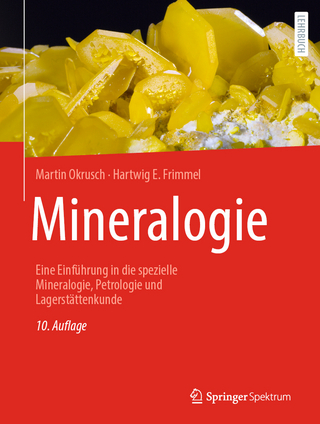
Computational Methods and GIS Applications in Social Sciences - Lab Manual
Taylor & Francis Ltd (Verlag)
978-1-032-30292-8 (ISBN)
The first hands-on, open source, KNIME lab manual written in tutorial style and focused on GIS applications in Social Sciences
Includes 22 case studies from USA and China that parallel the methods developed in the textbook
Provides clear step-by-step explanations on how to use open-source platform KNIME to understand basic and advanced analytical methods through real life case studies
Enables readers to easily replicate and expand their work with new data and models
A valuable guide for students and practitioners worldwide engaged in efforts to develop GIS automation in spatial analysis
Provides support materials for downloading data and programs for implementing all case studies included in the book and the KNIME lab manual
Lingbo Liu is a postdoctoral fellow at the Center for Geographic Analysis, Harvard University, leading the development of Geospatial Analytics Extension for KNIME. He was a Lecturer at the Department of Urban Planning, School of Urban Design, Wuhan University, from 2005 to 2022, and earned a PhD in digital urban administration and planning at Wuhan University in 2018. His research uses multi-source data and quantitative models to capture the spatiotemporal features of urban systems and provides decision support for public policy, sustainable urban planning, and design. Fahui Wang is Associate Dean of the Pinkie Gordon Lane Graduate School and Cyril and Tutta Vetter Alumni Professor in the Department of Geography and Anthropology, Louisiana State University. He earned a BS in geography at Peking University, China, and an MA in economics and a PhD in city and regional planning at the Ohio State University. His research has revolved around the broad theme of spatially integrated computational social sciences, public policy and planning in geographic information systems. He is among the top 1% most-cited researchers in geography in the world.
1. Getting Started with KNIME and Its Geospatial Analytics Extension. 2. Measuring Distance and Time and Analyzing Distance Decay Behavior. 3. Spatial Smoothing and Spatial Interpolation. 4. Delineating Functional Regions and Application in Health Geography. 5. GIS-Based Measures of Spatial Accessibility and Application in Examining Healthcare Disparity. 6. Function Fittings by Regressions and Application in Analyzing Urban Density Patterns. 7. Principal Components, Factor Analysis and Cluster Analysis and Application in Social Area Analysis. 8. Spatial Statistics and Applications. 9. Regionalization Methods and Application in Analysis of Cancer Data. 10. System of Linear Equations and Application of Garin-Lowry Model in Simulating Urban Population and Employment Patterns. 11. Linear and Quadratic Programming and Applications in Examining Wasteful Commuting and Allocating Healthcare Providers. 12. Monte Carlo Method and Applications in Urban Population and Traffic Simulations. 13. Agent-Based Model and Application in Crime Simulation. 14. Spatiotemporal Big Data Analytics and Applications in Urban Studies.
| Erscheint lt. Verlag | 25.10.2023 |
|---|---|
| Zusatzinfo | 19 Tables, black and white; 16 Line drawings, color; 2 Line drawings, black and white; 173 Halftones, color; 189 Illustrations, color; 2 Illustrations, black and white |
| Verlagsort | London |
| Sprache | englisch |
| Maße | 156 x 234 mm |
| Themenwelt | Naturwissenschaften ► Geowissenschaften ► Geografie / Kartografie |
| Sozialwissenschaften | |
| ISBN-10 | 1-032-30292-5 / 1032302925 |
| ISBN-13 | 978-1-032-30292-8 / 9781032302928 |
| Zustand | Neuware |
| Informationen gemäß Produktsicherheitsverordnung (GPSR) | |
| Haben Sie eine Frage zum Produkt? |
aus dem Bereich


